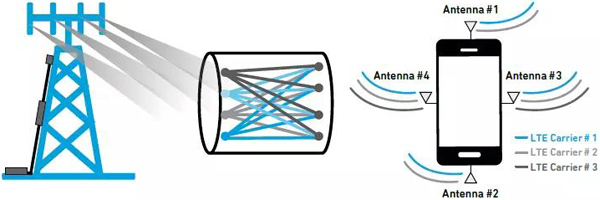Why RF filters are becoming more important?
The rapid growth of mobile wireless data and 4G LTE networks has led to a growing demand for new bands and for carrier aggregation to combine bands to accommodate wireless traffic. The 3G network uses only about five bands, and LTE networks now use more than 40 bands, and with the advent of 5G, the number of bands will increase further.
Connected devices send signals across multiple bands: cellular, Wi-Fi, Bluetooth, and GPS, while avoiding interference. We might immediately think of smartphones, shark fins mounted on top of cars, cellular base stations, radar and communications systems, and industrial, scientific, or medical applications connected to the Internet of Things (IoT). At this point, the filter is needed to come out.
A smartphone without a filter is a brick
Like antennas, filters are becoming an increasingly important part of networking mixers. The device receives a variety of frequencies, and the filter allows the desired frequency to pass through while suppressing the unwanted frequency. In other words, the filter is like Gandalf in John Ronald Ryall Tolkien's “The Lord of the Rings”: "You shall not pass!" "Today's devices are usually equipped with 30 to 40 filters to avoid interference. This situation will become more complicated as the next generation of high-end smartphones requires more filters.
Filter design challenges
Filters are an essential tool for RF design engineers, but they also face many challenges. For starters, the performance of the filter varies with temperature. Filters in various devices today can withstand an average temperature of 60 degrees Celsius (140 degrees Fahrenheit) or higher, while indoor filters can withstand an average temperature of 25 degrees Celsius (77 degrees Fahrenheit) and even higher temperatures for shark fins or filters embedded in the roof. The higher the temperature of the filter, the harder it is to filter out a particular frequency, and the more likely it is that the signal will "drift" to the adjacent band.
Managing temperature drift is particularly important because many of the newly allocated bands are very close to existing bands. At the same time, carrier aggregation (CA) is growing rapidly, with cellular service providers combining up to five carrier channels to prove network performance, where precise filtering is a prerequisite.
To address temperature issues, the RF industry is developing low-drift and drift-free filter technologies. Surface Sonic (SAW) and Body Sound Wave (BAW) filters maintain a high degree of stability when temperature changes, meeting the demanding performance requirements of emerging devices.
As mentioned above, the next generation of high-end smartphones also needs to be equipped with more filters. Like all other components of rf, there is very little room for filters. Engineers must be able to integrate multiple filters into smaller spaces for higher performance.
Duplexers, triplexers, cuadruplexers and hexaplexers are collectively referred to as multiplexers. Multiplexers integrate multiple filters into one device to help designers save space, simplify design, meet performance requirements, and avoid interference.
In today's mobile environment, the number of bands required for a device is staggering, and with the advent of the 5G era, this trend is only going to get worse. While supporting all bands can cause interference problems, the problem can be solved with a filter. Without filters, the network simply does not function.
Please check our filters: https://cdjx-mw.goodao.net/filter/
Hope you may find what you’re looking for, if not, we also provide customization with your drawing.
Post time: Nov-26-2021







